- Joined
- Oct 21, 2007
- Messages
- 1,387
hmm
wouldnt the alchohol harm the T?
wouldnt the alchohol harm the T?
ha, good luck after that story?! i don't think so! to be honest, i never knew that mold could be that badLong story short, the mold had infected the Ts in every enclosure I didn't completely, change 6 of them, and even though the mold never came back in the tank the Ts became covered with it about 3-4 weeks later and died within 2-3 days of the first mold sighting:8o . They never curled or even looked dead other than being very fuzzy with mold and I never would have suspected that mold could have thrived in such dry conditions.
Good Luck!
Likely the bacterial/other infection was the primary, which served to help reduce immune response to the point where a (hopefully opportunistic) fungus was able to, well, be opportunistic, obviously.The antibiotic was not for the fungus, it did not exist at the time of the original treatment. The antibiotic does seem to have stopped the spread of the original symptoms.
Provided the subject survives, any darkening seen is likely to remain (at the very least until the next molt). Now, as for the cascading reaction which ends up at "black spot(s)" on invertebrates due to fungal pathogens/infections, here's a puzzler for you (and most the rest of us, as well): as some fungi are known for a fact to induce the host to produce melanin to protect against both fungicidal UV-radiation as well as (possibly) preventing damage via hydroxyl radical formation by deactivation of Hydrogen Peroxide (H2O2) via an oxidation reaction of Fe(II) to Fe(III), the darkening/melanization *COULD* be due to that, just as easily as it *COULD* be due to the immune system of the invertebrate itself, as one of their immediate defenses is melanin-encapsulation of invading pathogens, with the free-radical byproducts of the process (presumably) assisting in the destruction of the invader (do a google search on Prophenoloxidase conversion into active phenoloxidase - that should bring up plenty of info, and/or a google search on "Defensins", which are by no means the sole purview of insects -- arachnids have similar compounds, some highly specialized and species/genus-specific, like Androctonine). If you have access to a school library, odds are you *should* be able to find plenty of scientific documentation on the above.But who knows if that is actually the case. We never identified what the actual cause of the original discoloration/skin damage.
IME, those inverts with serious (presumably systemic) fungal infections are disinclined to take food (no appetite generally means sick animal); I have had some success in my own experimental treatments of very mycotically infected scorpions where ones that declined to eat prior to treatment actually did begin eating again (with the accompanying statistically better prognosis)...But again, all of this is still in a fairly early research stage, so I can't tell you what will work out until the Fat Lady Sings [tm].She is still strong but not fast and so far has no interest in crickets, earthworms or pinkies.
That is very good news to me, as I've already made my views quite apparent regarding those who clearly couldn't give a tinker's cuss about what condition their invertebrates are in, with the amount of money collected for them being the sole consideration, with the care, keeping of them etcetera either back-burnered in comparison, if not neglected entirely.This period of acclimation to captivity is so dangerous for any wild caught animal. That is why the pet store I work for practices quarantine procedures and tends to the stress and deparasitation before making animals available for sale.:clap:
While I am NOT -- by any stretch -- an expert on Tarantulas (I'm the first to admit that), I *can* say that, logical sounding as that may be, it is possibly still the wrong thing to do -- note I say 'possibly' -- as my own experiments have demonstrated that taking measures to change the environment to make things less hospitable for the fungal pathogen(s) in question, if done at the expense of environmentally stressing the specimen itself, generally results in a lowered immune response, which in turn leads to the invader gaining the upper hand and culminating in the death of the specimen in question. Just my $0.02 on the matter.Well, I hate the idea of drying out a freshly WC blondi, but that makes too much sense not to.
You're not the only one engaged in a search for a silver bullet although (comments about the usefulness of parabens aside) I have to say I'm not entirely convinced that there is any one single "perfect cure", per se: I am currently of the informed and reasoned opinion that the _possibility_ of one exists, although I suspect it more likely that things will culminate for me in finding a select number of different compounds each of which will be a different item in the arsenal, effective against general groups/families (e.g., treatment X for Beauveria spp., treatment Y+Z for Hypocreales, etcetera).I want to treat the fungus, but I'm not sure what is effective and safe for her.
Again, I'm glad we spoke whilst I was in the middle of penning this (longwinded) reply, as they'll be added to the list of those I have yet to speak with in my quest for further information, the ultimate goal being to properly arm all of us with something which will work in situations like these.Now that it is daytime, I am going to ask my vet. He (they actually, Drs. Beasley and Nolan) is a very accomplished and recognized exotic pet vet
No argument there: Entomology itself is what I would tend to call a 'rarefied' profession -- not that being a DVM itself isn't rarefied as well, just the former even more so; how much more rarefied, then, is Arachnology in particular -- and Arachnid or at least Arthropod Pathology, beyond that....?there is so little that is known about tarantula medicine.
Please do; referring back to what I said regarding topical treatments being ineffective against FP's once they've made it into the haemolymph, I suspect it will have to be something given internally, as discussed.I will let you guys know if the vet recommends a treatment that no one here has thought of yet.
...Though I cannot say that either could or would be particularly efficacious, either -- at least not once there is cuticle penetration by the fungus, as after that, no topical treatments appear to have any significant effect.What about tea tree oil and/or grapefruit seed extract? Both have anti-fungal and anti-bacterial properties? Are they dangerous to Ts?
Do you have anything not particularly species specific that you would recommend that I start until I can get a culture to my vet on Monday? You also mentioned cheap ways to get that culture started, could you tell me more about that?I suspect it more likely that things will culminate for me in finding a select number of different compounds each of which will be a different item in the arsenal, effective against general groups/families (e.g., treatment X for Beauveria spp., treatment Y+Z for Hypocreales, etcetera).
I have been under the impression that the larger the fungus colony, the stronger and more resilient the colony and for that reason, every bit you beat back the fungus, the less strong and resilient it was. Is this inaccurate?ALL entomogenous fungi are naturally equipped to colonize/infect/penetrate, as they naturally feed on arthropods -- which means that topical treatment(s) can ONLY work if you treat *immediately*. Ideally before there are any visible signs. Nice, eh?
The peat felt somewhat moist as I was pulling it out of the bag each time I used it. The first time, it took a couple of weeks, I think, to grow mold/fungus/whatever it is. I did mist once or twice. When I threw that stuff away and used the same brand, but different bag of peat, it only took a couple of days to appear. No misting the second time.Just curious...are you keeping your seemani moist?
Yes, and there's no reason *not* to use an external fungicide -- provided one uses one non-toxic to inverts, it will (at the very least) do no harm, and will stymie the spread, perhaps a bit.If it is indeed a fungus, could one not apply anti-fungal cream to the body?
Quite right -- but they can rule things out.Antibiotics aren't going to cure a fungus.
Not a bad idea: that was my first thought when I embarked on this fungal nightmare, myself, and while I initially did work with imidazole-derivatives (tioconazole, miconazole, etcetera), their activity differentiation by dosage is just TOO narrow to not risk killing the host (and not enough lets the host die of infection, which is what I've already witnessed). Although I haven't used Tolnaftate extensively enough yet to state that it would be significantly better (or worse) toxicologically than imidazole-derivatives, that's another easily found fungicide, but I'm not recommending it or saying it won't kill your pet.If it were my tarantula, I would be applying Lotrimin AF or a vaginal yeast infection cream (same active ingredient, but higher percentage of active) with a Q-tip to the affected areas and seeing if that didn't help.
I've addressed this elsewhere, and will be collating it again and put it on my site, but time currently forbids further commentary.Also, most fungus thrives in a moist environment, could one not keep her in a bone dry enclosure with a water bowl to see if that also helped to remedy the situation?
That would, I'm sad to say, be me. Not trying to be lofty about it, but the facts are, I've now dedicated a good amount of my time to coming up with (ideally) inexpensive, readily available, and a safe for inverts (most important!) compound/compounds for fungicidal activity, in the interest of helping EVERYONE to prevent/eliminate/treat Invert pathogens. With viruses pretty much outside the scope of my purview (antiviral drugs are luckily just about as rare as true viral infections in arachnids), and we already have known antibiotics which are invert-safe, that leaves the final and most pernicious of the microscopic trio: fungal pathogens.Maybe someone with more experience will chime in with some advice soon.
Something I should (probably) clarify: while topical treatments won't do anything to halt systemic issues, application of an INVERT-SAFE fungicide (even a weak one) to the external growth areas won't do any *harm*, really -- and as you'd said earlier, anything which saps the mycelial growth's strength does help attenuate it, though not always by very much.because, for lack of any other immediate action other than seperating and sanitizing cages, that's all I could think of that sounded safe. It won't have any affect if the infection is systemic, as we suppose it is, but we don't really know that. So I figure why take the risk that the infection is not yet systemic and, not having removed the fungus, allowing it to go systemic.
Check your PM's and your email on that. I'm sorry we're not in the same state, as I'd happily just give you what I've got, and while I don't mind shipping it, you're better off if you can find stuff locally.And, Jason, if you have any internal treatment ideas like you where alluding to ealier, I would love to hear about them.:worship: :worship: :worship:
Viva Gaia!!!
OK, first off: No, I was saying specifically NOT to use de-natured alcohol, but instead to use Ethyl alcohol (aka Ethanol, often abbreviated ETOH -- yes, the same alcohol we humans get smashed on). Denatured Ethanol is TOXIC. Lethally so.If I understand correctly, you recommend a drop of denatured ethyl alcohol (like Everclear) in 10 ml of Methyl Blue solution. I have some questions.
You mentioned that I could prepare Everclear to use as the ethyl alcohol. How do I do this?
Absolutely. Use *steam distilled* water for everything in any 'medicinally compounding'/chemistry techniques you do -- that's my advice, not the least of which is because many times, some fungicides (quaternary ammonium compounds, parabens, DDU and some others) are, to varying degrees, rendered inactive upon hitting any residual chlorine/chloramine (I don't know if they still have the ammonia-treatment stage along with the chlorine treatment stage at your local WSSC; with Chloramine's possible (heh) carcinogen status, they may do that no more, but I've not checked). In any event, the Chlorine/chloramine will mess up the microscale amounts of the chems we're discussing the use of, so yes: not merely de-ionized or RO water, but distilled, just to be thorough.You mentioned that most methyl blue was available as 2% (the stuff I have is) and that you would perhaps recommend .2% more highly. Do you recommend I cut it with distilled water?
No surprise, as amphibians and the like have far more permeable skins than ours -- or an invert's, which is worth noting -- and anything in the water they're in is inevitably in them, as well. Methylene blue used to be (and may still be) standard issue in the EMT/BS-Compliant labs where you had a Cyanide/CO kit: one syringe w/a few ml of Methylene blue injected directly into a human can bring them back from Carbon monoxide or HCN death, as it converts haemoglobin to methamglobin (IIRC), or thereabouts -- in any case, it changes the blood's affinity for HCN, CO and CO2, and increases overall O2 affinity, so it can be a life-saver...For humans. Frogs, I can't say, though I'd suspect that a 5:1 ratio (and is that 5 parts water to 1 part PURE Methylene blue, as in the solid, greenish-blue crystalline form? Holy hell, that'd probably kill *ME* if you dipped me in it....) is a tad high, though you aren't saying if this is by weight or volume, and that's important as well...Keep things precise, to avoid confusion, and hopefully prevent anything tragic...On that note, when you say 50:1, do you mean 50 parts, by volume, of water, to 1 part, by volume, of the 2% Methylene blue solution? I'm assuming so, as a mixture by weight of Water:MB, both being 100% purity, in a 50:1 ratio, would be enough to STAIN THE PLANET :>I use methyl blue as an anti-fungal agent for my poison dart frog eggs. I use a ratio of something like 50:1 of reverse osmosis water to methyl blue. A friend mixed hers at something like 5:1 for Potter Park Zoos eggs and they all died. When she tried my solution, she had fewer deaths.
I'll come back to this in a moment (or make a separate post about it, as it's information both elementary, but which may not have occurred to some, so it probably deserves a separate reply). First, I'm going to make another discrete post to clarify what I told you before, via phone.You also mentioned that you had some ideas on how to orally dose a tarantula. I would be unspeakably grateful for any of that you have to share.
Come to mention that, what dosage do you recommend that I try, how often and for how many days.
It is worth putting forward, again, the fact thatI know that you are not a vet
I appreciate the high praise: I sincerely do. All the same, let me assure you that I do not (yet) have the answers which I'm looking for, although considering my track record with the Gordian knots I've been handed, the use of razor-sharp intellect proves its worth (yes, I have no humility).but you have such an amazing handle on this whole situation that I don't think there are very many in the whole world that could equal it.
I'm honestly just glad to be of assistance, and it was, admittedly, purely by providence (or being jammed for ~$700 -- one of the two) that I happened to be actively engaged in finding solutions for pathogens of this type, at this time.I can't tell you how grateful I am for all of the attention that you have given this case.
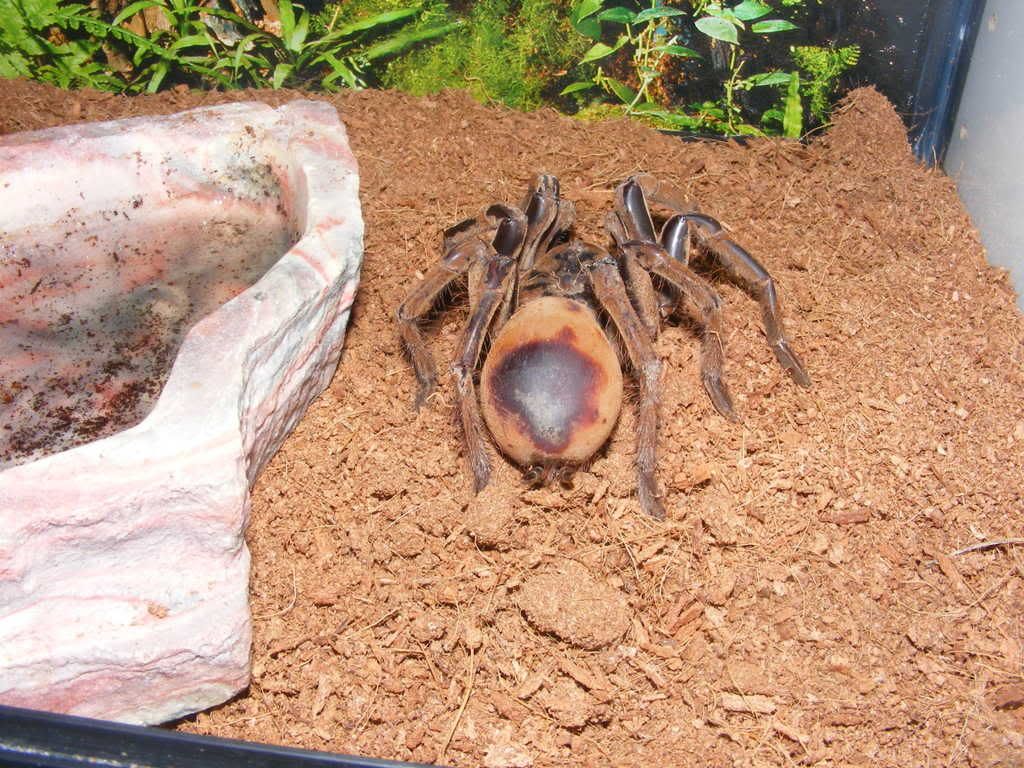

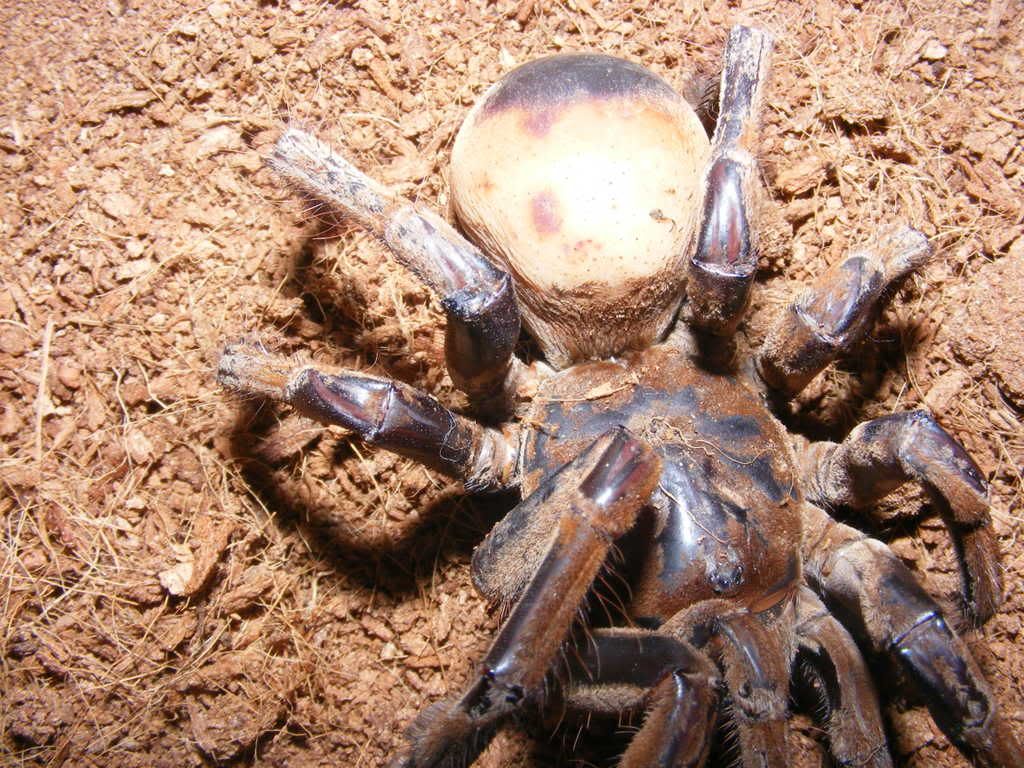
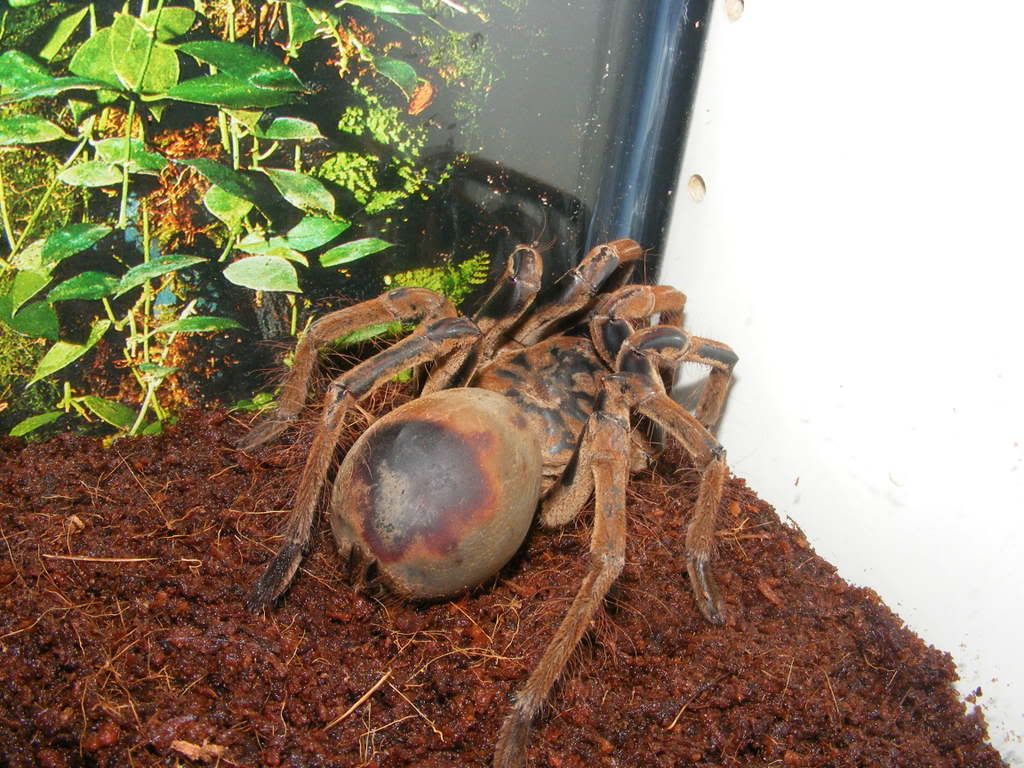
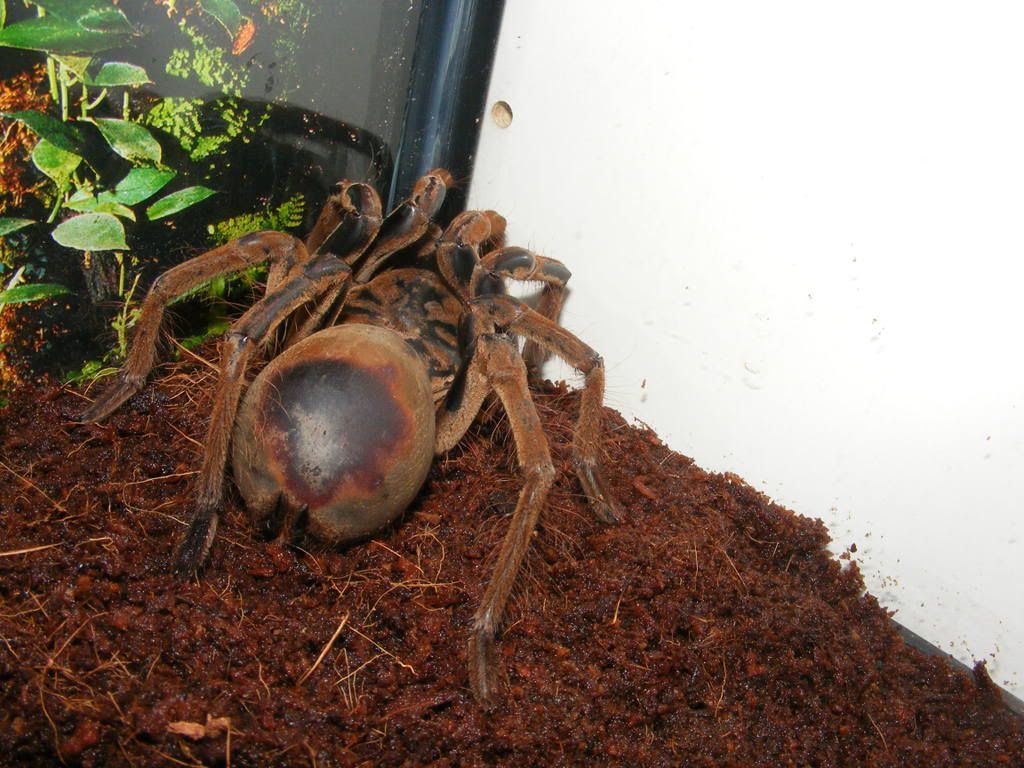
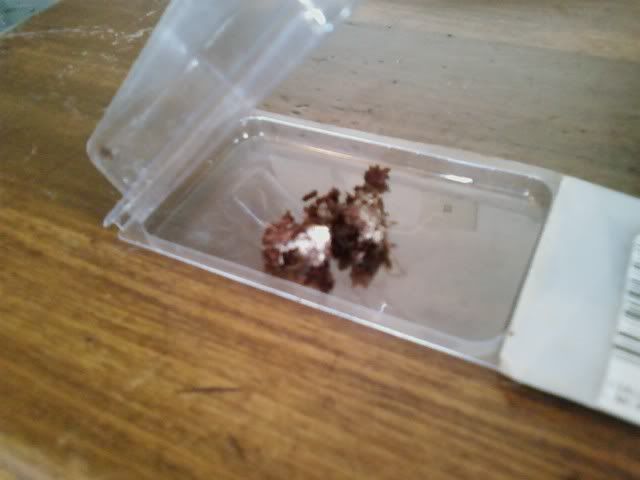
keep the seemani dry as a bone in death valley lolI've got some of that same mold as in Post #12 in my A. seemanni's tank. I have her on peat moss (Schultz bag from Wal-Mart) and I already changed it out once because of it. A couple of days later, it came back. My other tanks using the same peat from the same bag don't have this problem. They're all Kritter Keeper type tanks, but different sizes (1 mini, 3 small, 1 large). The large one is the one with the problem.
I had just moistened the coco coir, the water was in the process of spreading out. After it had spread, it was evenly just lightly moist. In the first pics it has dried out more than I usually allow it to. I normally keep the substrate lightly moist. I am maintaining the humidity at 65% to 75%.Before she makes it to her next moult take her out and put her in another tank - in that last pic of her the coco fibre is wet not moist... ...Let her dry out a bit, another tank will reduce the chance of another mold infection.
Too true, too true. Unfortunately every book that I have read so far seems to agree on the outcome of not treating a systemically infected tarantula.She is obviosly looking better but still not good, all these recommendations of drugs who knows the outcome of what such a mixture would cause.
I appreciate the offer. Schultz and Schultz recommend a topical application of gentian violet or betadine for topical infections. They pretty much tell you to make peace with the spider gods for systemic infections.if u got the tarantulas keepers guide it has some info on fungi.i got that book i will read that part and get back to u later